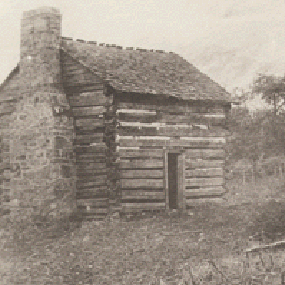
The amazing ordeal of the captivity and escape of Mary Draper Ingles along the New, Kanawha, and Ohio rivers in 1755 is a widely known and often told story of colonial frontier history (read the story on New River Gorge National Park and Preserve website). This story of the horrors and hardships faced by civilians during the French and Indian war has a lesser known but just as compelling postscript occurring in 1782 on the upper Bluestone River during the American Revolutionary War. Thomas Ingles was carried into captivity by warriors of the Shawnee nation at age four along with his two year brother George, and mother, Mary Draper Ingles. The Shawnee were returning to their home villages in southern Ohio near present day Chillicothe. Their route bypassed the New River Gorge by traveling upstream along the Bluestone River from its confluence with the New River near present day Hinton. Their route would have followed the path which is now the Bluestone Turnpike Trail of the Bluestone National Scenic River. This part of Mary Draper Ingle's journey, at least to a parent, would have been the most stressful to complete. If her children had been too loud, slow, or uncooperative they would almost certainly be killed in front of her eyes in order to prevent the raiding war party from being overtaken by a rescue party from the settlements they had just attacked. Upon reaching the Shawnee towns along the Ohio River, Thomas and George were taken from their mother and as was a custom with captives of many Indian nations, adopted into separate families and villages within the tribe. According to family history it was later learned that George died not long after the separation from his mother, but Thomas was fully absorbed into the tribe and spent the next thirteen years of his life as a Shawnee. Thomas's bond was so complete that he lost his knowledge of English and seemed to have forgotten all memories of his former life and parents. When Mary Draper Ingles was reunited with her husband William they resumed their lives on the frontier raising a new family but never forgetting their lost son Thomas. Twelve years after his abduction, during a peaceful period on the frontier, William Ingles negotiated and paid to have Thomas returned to the settlements, but Thomas ran away from the man bringing him back to his parents and returned to his Shawnee family. William's next attempt was a personal journey to the Shawnee towns, and this time at age seventeen William agreed to return with his father. Although reunited with his mother and father, Thomas struggled to readjust to their world, relearn their language, and become an adult. Thomas's life moved forward with the frontier, and by 1782, nearing the end of the Revolutionary War, he and wife Eleanor, along with their children; Mary age 5, William 3, and newborn daughter Rhoda, were living on a subsistence farmstead at the headwaters of the Bluestone River near present day Tazewell, Virginia. The American Revolution was more than just a struggle between the infant United States and Great Britain. The Shawnee along with several other Indian Nations had allied themselves with the British in hopes of defeating the new nation and ending the settlement expansion of the frontier into their traditional hunting grounds and homelands. One of the frontlines of this war was the isolated farmsteads of the Bluestone River. In an eerie repeat of the raid that devastated his childhood family, Thomas found himself working his farm fields one morning when Shawnee raiders attacked and burned his cabin, capturing his wife and children. Like his father before him the unarmed Thomas could only watch from a distance as his family was carried away to the Shawnee towns in Ohio. Just as his father did Thomas went to the nearest neighbors in order to get help to pursue the Shawnee and reclaim his family. This time the story ended differently when on the fifth day after the attack Thomas and a band of his fellow settlers surrounded the retreating Indians camped for the night. When Thomas and the rescuers rushed the camp at first light the Shawnee began to tomahawk the captives. Mary and William were killed, and just before Thomas ran and struck down a Shawnee warrior, the Indian tomahawked Eleanor as she tried to protect her infant child Rhoda. When Mary Draper Ingles and husband William, then living on the New River near present day Radford, VA, received word of the attack on their son's family, William travelled with a doctor to the Bluestone settlements to help. Although badly injured, with the doctor's assistance Eleanor recovered. Thomas, Eleanor, and Rhoda stayed on the frontier eventually moving westward and settling in Tennessee. |
Last updated: February 8, 2021
